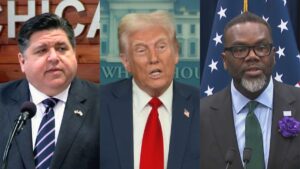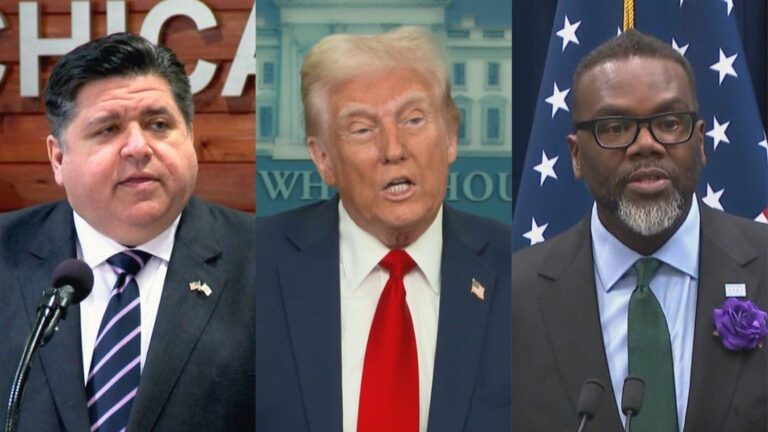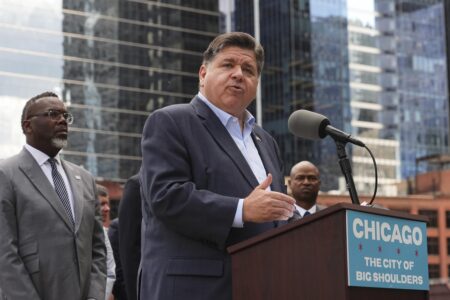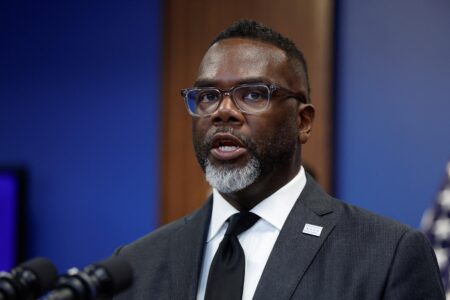Intensifying Political Rivalry Between Trump and Pritzker Highlights Growing National Divisions
Deepening Political Schism: The Trump-Pritzker Confrontation
The ongoing political battle between former President Donald Trump and Illinois Governor J.B. Pritzker has become a vivid illustration of the widening ideological chasm in American politics. What started as pointed verbal sparring has escalated into a critically important clash that embodies the starkly different visions each leader holds for the country’s future. Pritzker’s progressive agenda in Illinois stands in direct opposition to Trump’s conservative ideals, creating a contentious dynamic that reverberates well beyond state borders.
Several core factors fuel this intensifying discord:
- Contrasting Policy Approaches: Divergent views on taxation, healthcare reform, and the balance of state versus federal authority underscore their ideological rift.
- Media Warfare: Both leaders harness social media platforms and conventional news outlets to amplify their messages and counter each other’s narratives.
- Mobilization of Supporters: Each has successfully rallied large,passionate followings,further polarizing public sentiment.
| Policy Area | Trump’s Stance | Pritzker’s Stance |
|---|---|---|
| Taxation | Advocates for tax cuts favoring businesses and high earners | Supports progressive tax structures to finance social welfare programs |
| Healthcare | Seeks to dismantle and replace the Affordable Care Act | Promotes Medicaid expansion and increased public healthcare access |
| Immigration | Calls for stricter border enforcement and immigration controls | Endorses sanctuary policies protecting undocumented immigrants |
National Implications: Assessing the Fallout of the Political Standoff
The confrontation between Trump and Pritzker transcends personal rivalry, posing significant risks to the cohesion and functionality of American governance.This escalating conflict threatens to erode public confidence in democratic institutions, as both sides engage in accusatory rhetoric and partisan tactics that undermine trust. Experts caution that if tensions persist, bipartisan collaboration-vital for tackling pressing issues like economic recovery, public health crises, and social justice-may become increasingly unattainable.
Potential repercussions of this feud include:
- Legislative Deadlock: Heightened animosity could stall critical policymaking processes at both state and federal levels.
- Growing Public Disillusionment: Intensified polarization risks alienating citizens, leading to voter apathy and decreased civic engagement.
- Security and Social Stability Concerns: Escalating unrest might provoke civil disturbances, challenging law enforcement and public safety.
| Sector | Possible Consequences | Projected Timeline |
|---|---|---|
| Economic Habitat | Increased market instability and reduced investor confidence | Short to Medium Term |
| Public Health Policy | Obstruction of timely responses to ongoing health emergencies like COVID-19 | Immediate |
| Social Unity | Amplification of societal divisions and cultural fragmentation | Long Term |
The trajectory of this dispute will test the capacity of national leaders to prioritize collective well-being over partisan conflicts. Whether cooler heads prevail or the discord intensifies will significantly shape the political landscape in the near future.
Strategic Maneuvers: How Trump and Pritzker Are Navigating the Power Struggle
Central to this escalating rivalry are the contrasting tactics employed by Donald Trump and J.B. Pritzker as they vie for political dominance. Trump leverages his formidable media presence, combining provocative public events with targeted social media outreach to energize his core supporters and undermine Pritzker’s credibility. In contrast, Pritzker adopts a policy-focused strategy, emphasizing economic reforms and inclusive governance to attract a wider, more moderate electorate disenchanted by divisive rhetoric.
Both leaders have also forged strategic alliances and crafted messaging campaigns that extend beyond Illinois,signaling a broader contest for influence on the national stage. Their primary approaches can be summarized as follows:
- Donald Trump: Dominance in media narratives,grassroots mobilization,and legal challenges to opponents.
- J.B. Pritzker: Legislative innovation,bipartisan collaboration,and economic incentive programs.
| Leader | Main Strategy | Core Strength |
|---|---|---|
| Donald Trump | Media control and legal tactics | Highly mobilized and loyal base |
| J.B. Pritzker | Policy-driven leadership and bipartisan outreach | Broad coalition support |
Bridging the Divide: Policy Recommendations for Lawmakers
To defuse escalating tensions and strengthen democratic governance, legislators must commit to fostering bipartisan dialog rather than engaging in political brinkmanship. Creating cross-party working groups focused on resolving contentious issues can promote mutual understanding and cooperative policymaking. Openness initiatives, such as regular public briefings on negotiation progress, can empower citizens to hold their representatives accountable and combat misinformation that exacerbates divisions. Moreover, instituting mandatory conflict resolution and civility training for all congressional members could nurture a culture of respect essential for effective governance amid ideological polarization.
Below is a summary of legislative reforms that could help reduce partisan gridlock and enhance political stability:
| Reform Strategy | Anticipated Benefits |
|---|---|
| Ranked-Choice Voting | Promotes centrist candidates and diminishes extreme partisan victories |
| Campaign Finance Overhaul | Limits special interest influence and enhances transparency |
| Mandatory Bipartisan Caucuses | Encourages cross-party collaboration and alliance-building |
| Expanded Civic Education | Improves public understanding of governance and reduces polarization |
Conclusion: The Broader Impact of the Trump-Pritzker Rivalry
The ongoing political rivalry between Donald Trump and J.B. Pritzker is more than a localized dispute; it serves as a microcosm of the broader ideological battles shaping the United States today. As this conflict continues to evolve, its outcomes could significantly influence national political dynamics, potentially exacerbating divisions or, optimistically, prompting renewed efforts toward unity. Stakeholders and citizens alike will be watching closely, aware that the resolution-or escalation-of this feud may chart the course of American politics in the coming months and years.








